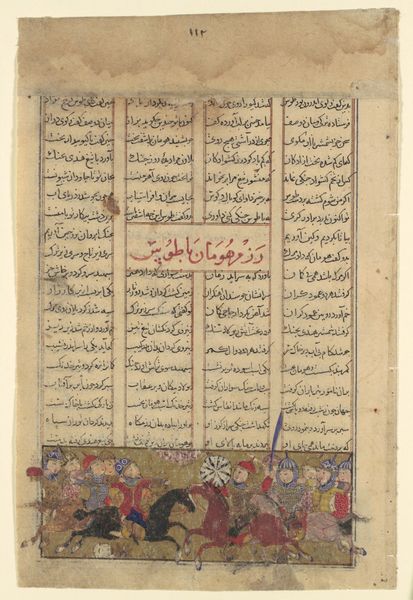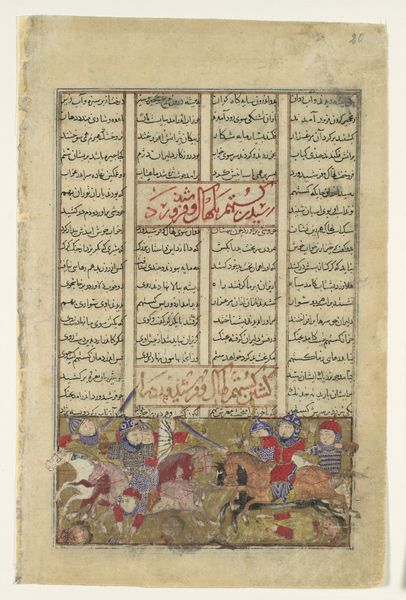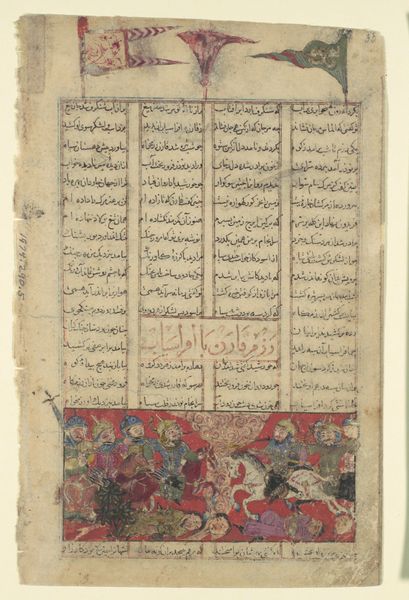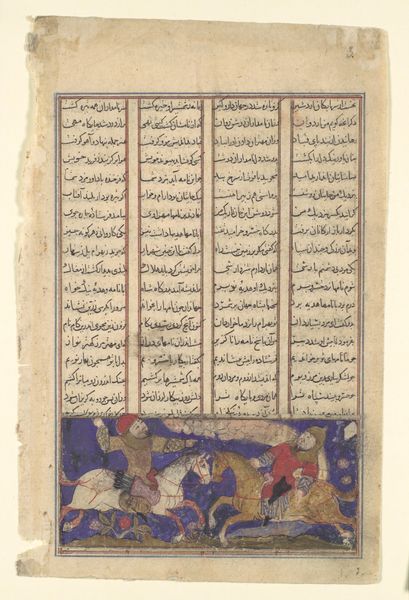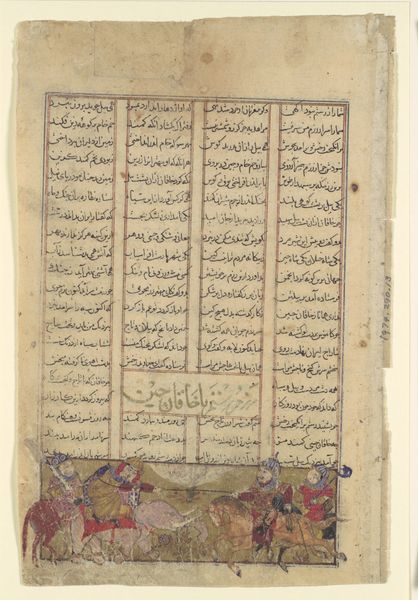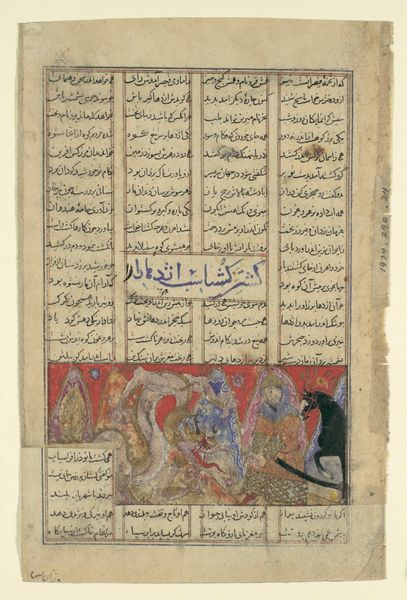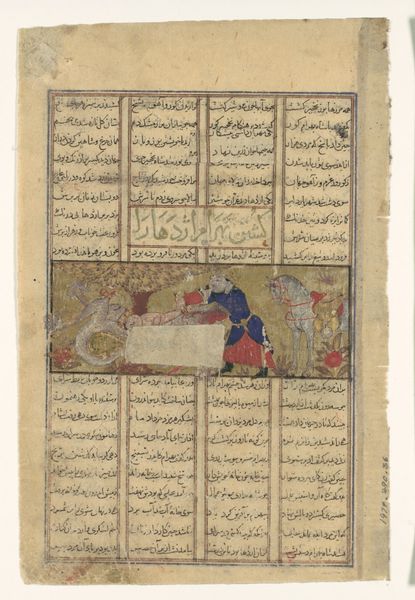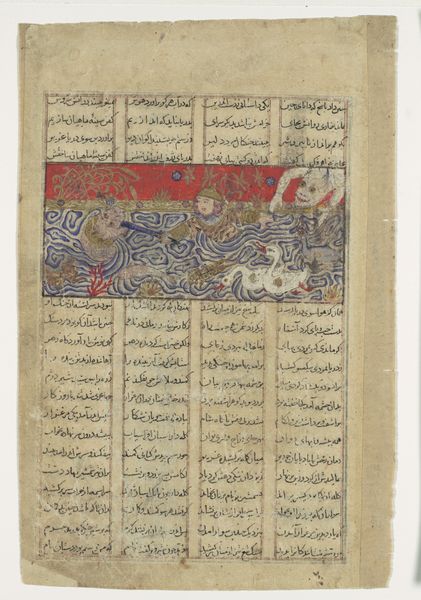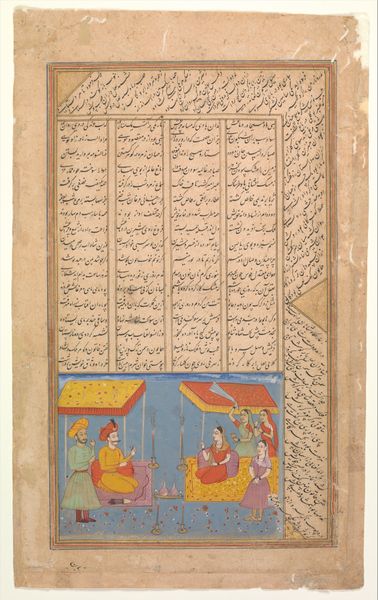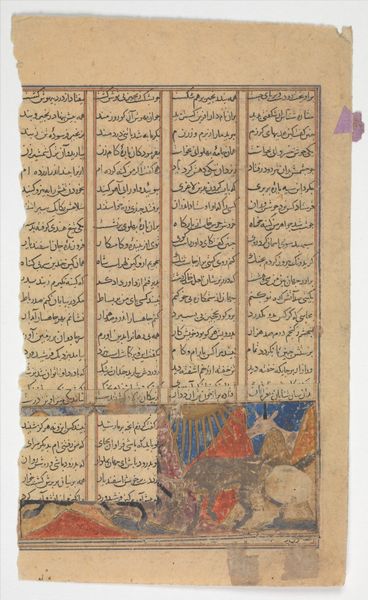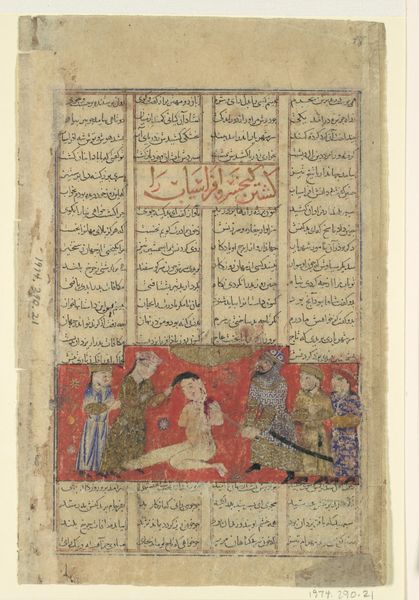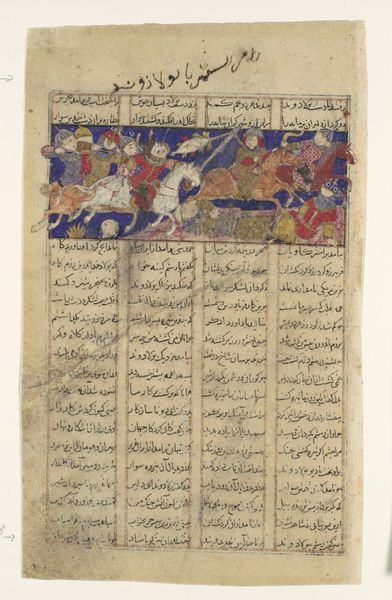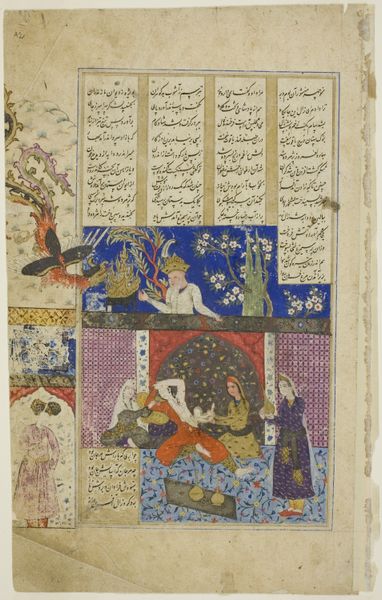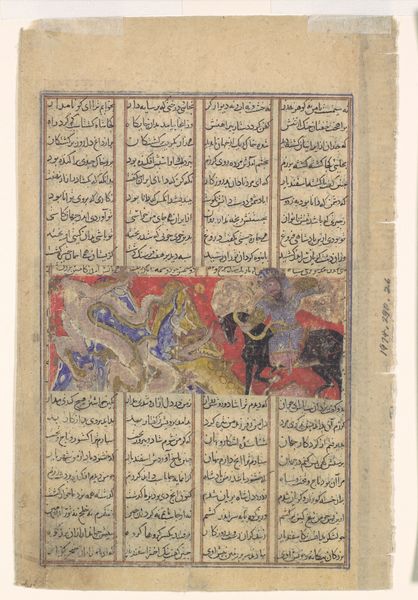
"The Combat of Rustam and Kafur", Folio from a Shahnama (Book of Kings) 1305 - 1365
0:00
0:00
painting, paper, watercolor, ink
#
painting
#
figuration
#
paper
#
watercolor
#
ink
#
coloured pencil
#
horse
#
men
#
islamic-art
#
history-painting
#
miniature
Dimensions: Page: H. 8 1/16 in. (20.4 cm) W. 5 1/8 in. (13 cm) Painting: H. 1 13/16 in. (4.6 cm) W. 4 1/4 in. (10.8 cm)
Copyright: Public Domain
Editor: So, this piece is called "The Combat of Rustam and Kafur," a folio from a Shahnama, or Book of Kings, made between 1305 and 1365. It's ink, watercolor, and coloured pencil on paper. I'm really struck by how the text and the painting are integrated. What do you see in this piece beyond just the obvious narrative? Curator: For me, this is a powerful intersection of art, literature, and political ideology. These Shahnama manuscripts weren’t just pretty pictures; they were actively shaping Persian identity and legitimizing rulership. The vivid colors and dynamic composition celebrate Persian heroism. Consider who was commissioning these works, the stories they chose to depict, and the message they wanted to send. Who benefits from this heroic narrative and what does it leave out? Editor: That’s a great point! It’s easy to get caught up in the visual appeal and miss the underlying power dynamics. Is this an example of art as propaganda? Curator: I think “propaganda” might be too simplistic. It's more nuanced than that. Think of it as nation-building through art. This image portrays Rustam, a Persian hero, in combat. How do these portrayals of heroes like Rustam impact perceptions of gender and masculinity within that society? Editor: So, by glorifying Rustam’s strength and bravery, it’s also subtly reinforcing patriarchal ideals. Curator: Precisely! The Shahnama, visually and textually, presents a particular vision of power, valor, and Persian identity. Examining these representations allows us to explore the intersection of art, politics, and social norms of the time. What alternative perspectives or narratives are absent from this idealized representation? Editor: I guess focusing on the elite stories, the everyday lives of women or commoners might be ignored. That's really changed how I look at it. It’s more than just a pretty picture, it is a cultural artefact loaded with social and historical meaning. Curator: Exactly. And by questioning whose stories are told and whose are omitted, we gain a deeper understanding of the past and its impact on the present.
Comments
No comments
Be the first to comment and join the conversation on the ultimate creative platform.
